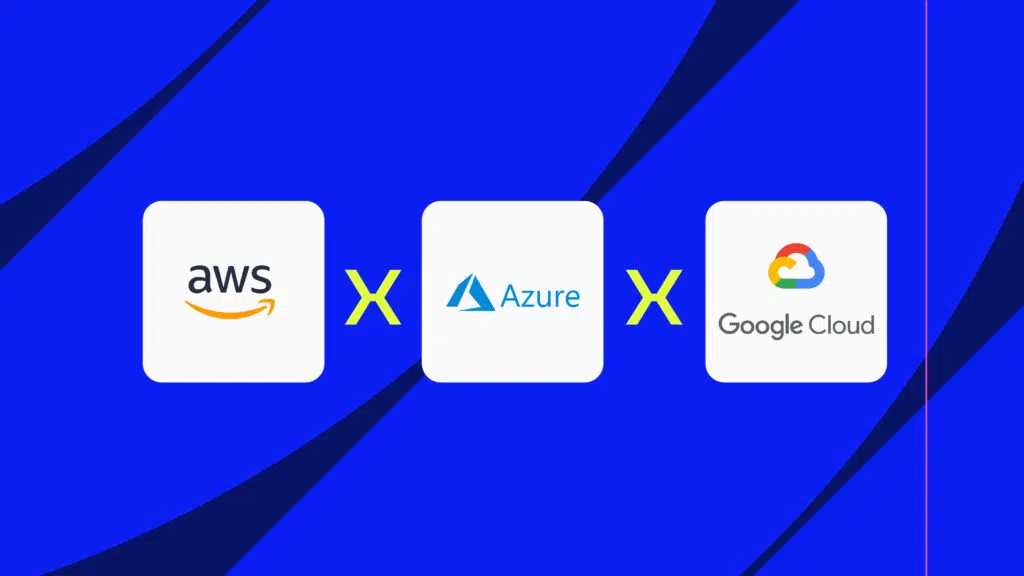The cloud is one of the most important elements for businesses today, from small to global enterprises. But in practice, it remains a broad concept that encompasses many possibilities. As you begin to consider moving your business to the cloud, whether for application deployment or infrastructure, it is essential to understand the differences and advantages of different services.
Although the types of services are growing by the day, there are generally three cloud models that you should consider as the most sought after:
- Software as a Service (SaaS)
- Platform as a Service (PaaS)
- Infrastructure as a Service (IaaS)
These acronyms are everywhere and are often used indiscriminately and even mistakenly. Our goal here will be to shed some light on what they are and how they can be used to help you chart your cloud computing .
For each of these, we will examine the concept, benefits and their applications. We'll also help you understand the key differences between SaaS, PaaS, and IaaS so you can choose the right option for your organization.
Definitions of IaaS, PaaS and SaaS
Let's now know the definition of one of these solutions:
SaaS: Software as a Service
Software as a Service, also known as cloud application services, represents the most common option used by companies in the cloud market. SaaS uses the internet to deliver applications, which are managed by a third-party vendor, to its users.
Most SaaS applications run directly through your web browser , which means they don't require any client-side downloads or installations.
SaaS offers numerous advantages for professionals and companies, significantly reducing the time and money spent on installing, managing and updating software . This frees up a lot of time for technical staff to focus on more pressing issues and issues within the organization.
PaaS: Platform as a Service
Cloud platform services, also known as Platform as a Service (PaaS), provide cloud components for certain software .
In practice, this service provides a framework for developers that they can build and use to create custom applications . All servers, storage, and networking can be managed by the company or a third-party provider, while developers retain complete application management.
No matter the size of your business, using PaaS offers numerous advantages, including:
- Development and deployment of simple and cost-effective applications;
- It is highly available and scalable;
- Significant reduction in the amount of coding required.
IaaS: Infrastructure as a Service
Cloud infrastructure services, known as Infrastructure as a Service (IaaS), are automated and highly scalable computing resources, such as a virtual machine. IaaS is completely self-service for accessing and monitoring computers, network, storage and other services.
IaaS allows companies to buy resources on demand as needed, rather than having to buy hardware right away.
IaaS offers many advantages, including:
- The most flexible cloud computing model;
- Easy to automate deployment of storage, networking, servers, and processing power;
- Customers retain full control of their infrastructure;
- Highly scalable.
How and when to use IaaS, PaaS and SaaS solutions?
Let's understand when the solutions can and should be used, depending on the existing problems in organizations.
How to use IaaS
If you are responsible for a corporate data center, you know that to activate and maintain any application it is necessary to consider absolutely all aspects related to the hardware and software of the system.
The first block of concerns includes basic issues such as physical space, power and cooling, in addition to setting up the entire internet access infrastructure, local network, load balancers and secure remote access. Completing this block you should think about your servers and storage devices that your application requires.
When we move to the cloud environment, this first block of elements is offered as Infrastructure as a Service (IaaS) . In other words, when hiring an instance or virtual machine as IaaS, you take a server with storage that is connected to a network and you don't have to worry about any physical aspect of all that hardware.
It's up to you to access those machines and install all the necessary software . Among the major IaaS market providers are Amazon Web Service, Microsoft Azure and Google Cloud Platform.
How to use PaaS
We know that for the application to work correctly, there is still concern with important issues such as the Operating System , its updates, adjustments and protections. We also need some kind of frontend like HTTP servers or session virtualizers. Finally we need to install and maintain a database about available storage device.
When this second block of elements is part of the cloud offer, we are talking about Platform as a Service (PaaS) . PaaS offerings are often tied to specific development frameworks.
This is important as operating system, database, and front-end issues are tuned to work well with a given environment. That way you can hire PaaS to run your .NET, Java, PHP, Ruby on Rails or Django application, among others.
Typically the PaaS provider offers some environment options for each type of framework and you will have to adapt to these restrictions. In this way, you are responsible for developing the application code and you only have to follow a few procedures to export this code to the PaaS infrastructure.
All maintenance of the production environment is the responsibility of the PaaS provider, which maintains the entire system completely automated. In addition to Google and Microsoft , other providers are available and scaling an application is very simple.
How to use SaaS
Software as a Service (SaaS) is a complete proposal where you only use the software that the provider has developed. In that case, your only concern is with customizing the software in order to guarantee its efficiency and good use.
The vast majority of SaaS offers are based on Web applications that all users access via browser. Common examples include Google Apps and Microsoft Office 365 where you can purchase email services and cloud office applications, or SalesForce and Pipedrive which offer sophisticated CRM solutions.
Solutions for Different Problems
As you can see, IaaS, PaaS and SaaS serve different purposes and therefore are complementary solutions . If you have a specific application with many particularities, it is likely that only IaaS can serve you in the cloud.
If you have your own application developed using the most popular frameworks on the market, it is likely that PaaS is the fastest and simplest way to migrate to the cloud, taking advantage of all the automation that this model offers.
Finally, if your needs fit into off-the-shelf solutions, SaaS offers the fastest alternative to using the cloud.
Orchestration and Automation
For the IaaS and PaaS models, it is critical to look at the orchestration and automation tools that are available from the provider and how you can interact with them to ensure that the solution scales as smoothly and automatically as possible.
In addition, this tool facilitates all tasks related to the high availability of your system and the creation of Disaster Recovery . Offers vary between different providers and generally the most complete and flexible solutions allow your application to be more easily ported to the cloud, enjoying the benefits of this environment more efficiently.
If you want to take this important step and rely on IaaS, PaaS and SaaS solutions, contact our team and check out the options that Skyone can offer and support your organization!





